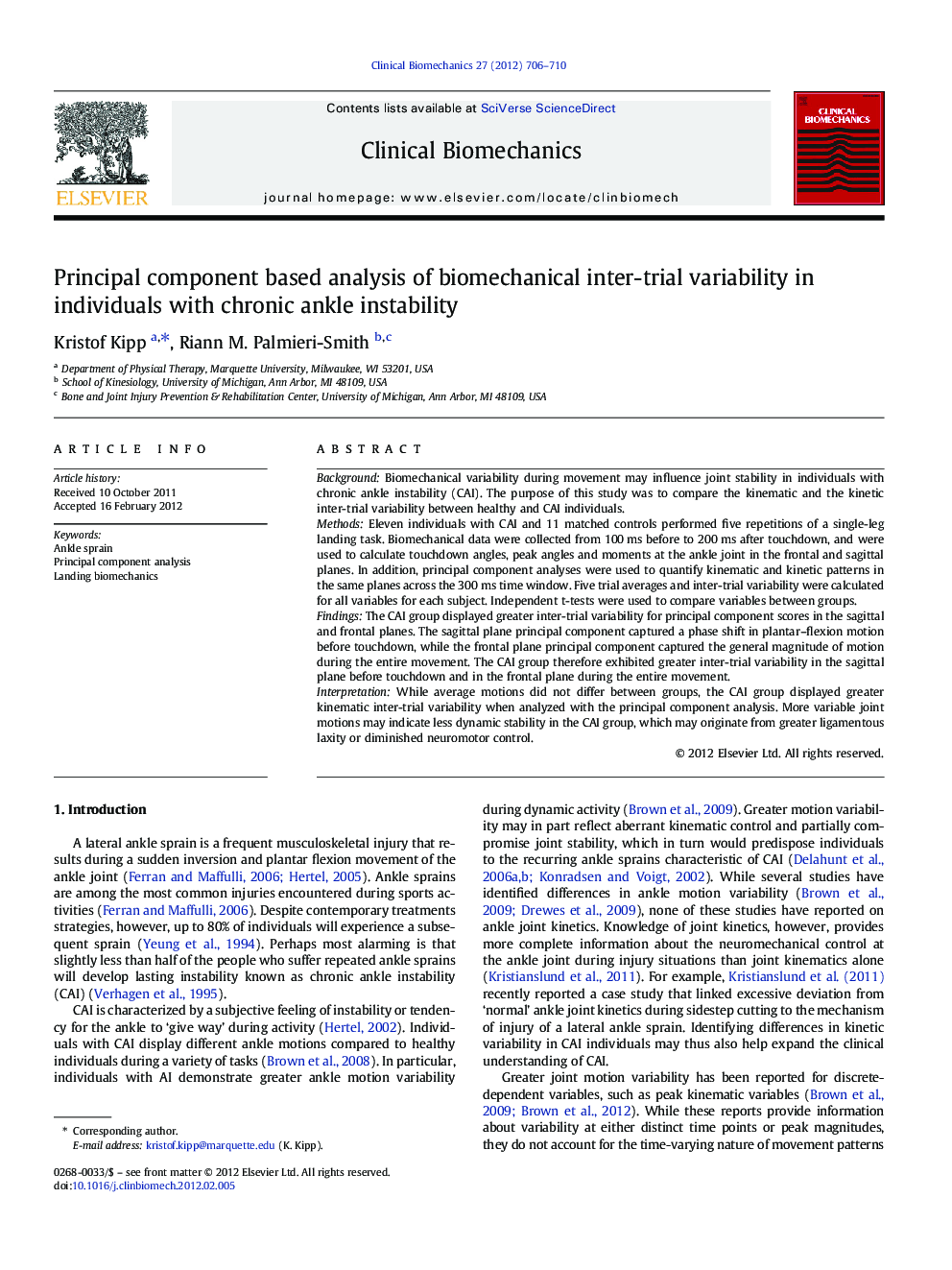| Article ID | Journal | Published Year | Pages | File Type |
|---|---|---|---|---|
| 4050787 | Clinical Biomechanics | 2012 | 5 Pages |
BackgroundBiomechanical variability during movement may influence joint stability in individuals with chronic ankle instability (CAI). The purpose of this study was to compare the kinematic and the kinetic inter-trial variability between healthy and CAI individuals.MethodsEleven individuals with CAI and 11 matched controls performed five repetitions of a single-leg landing task. Biomechanical data were collected from 100 ms before to 200 ms after touchdown, and were used to calculate touchdown angles, peak angles and moments at the ankle joint in the frontal and sagittal planes. In addition, principal component analyses were used to quantify kinematic and kinetic patterns in the same planes across the 300 ms time window. Five trial averages and inter-trial variability were calculated for all variables for each subject. Independent t-tests were used to compare variables between groups.FindingsThe CAI group displayed greater inter-trial variability for principal component scores in the sagittal and frontal planes. The sagittal plane principal component captured a phase shift in plantar–flexion motion before touchdown, while the frontal plane principal component captured the general magnitude of motion during the entire movement. The CAI group therefore exhibited greater inter-trial variability in the sagittal plane before touchdown and in the frontal plane during the entire movement.InterpretationWhile average motions did not differ between groups, the CAI group displayed greater kinematic inter-trial variability when analyzed with the principal component analysis. More variable joint motions may indicate less dynamic stability in the CAI group, which may originate from greater ligamentous laxity or diminished neuromotor control.
